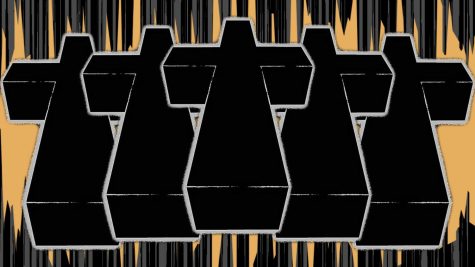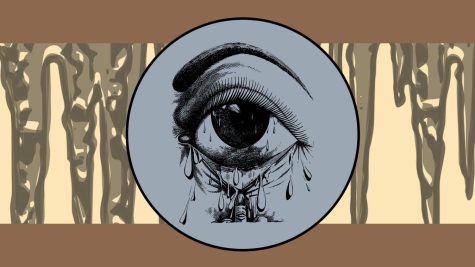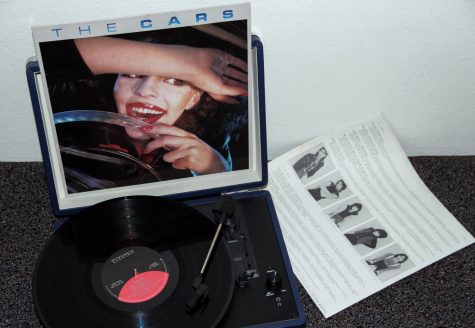Album review: Arctic Monkeys’ debut album still relatable
Youth, appreciation for alternative music is all you need to enjoy this album
The debut album of the North Sheffield band, “Arctic Monkeys” did not get a ton of recognition in the United States. It should have, especially amongst young adult audiences.
November 15, 2021
Despite having just reached its 15th anniversary in January this year, the Arctic Monkeys’ debut album “Whatever People Say I Am, That’s What I’m Not” is relatively unknown to American audiences.
The band, whose members were all between 20 and 21 at the time of the album’s release in 2006, centered many of its themes around coming of age in northern England where the band is from.
The band drew inspiration for writing songs from their time growing up in England, but that does not change the fact that the themes within each song apply to most college-age people, especially those who have any experience partying.
The album kicks off with the rollicking tune, “The View From the Afternoon,” which throws you into the album with up-tempo guitar riffs and heavy backbeat that any alt rock fan would tap their foot to.
This is placed back to back with one of the band’s most quintessential songs, “I Bet That You Look Good on the Dancefloor,” which was one of the band’s few songs to garner widespread acclaim. These two deal with the idea of a night out not living up to expectations, but in a tasteful way.
Much of the first half of the album deals with these and other closely related themes that are almost universal experiences for university students.
The first half is mostly up-tempo, hard-driving songs that look at the anticipation many have to reach the age when they can start going out with their adult friends and build adult relationships.
The first half of the album identifies these themes, but unlike so many sappy coming-of-age media, it packages it in an exciting, fun-to-listen-to form that almost does not let on to the meanings of the songs.
This is contrasted with the second half, highlighted by slower and arguably more meaningful songs. Where the first half of the album is a good bit of fun, the second half is more laid back and easy to listen to.
This more laid back feel is highlighted by songs like “Mardy Bum” and “A Certain Romance.” Being slower makes the lyrics of both easier to discern, and thus the songs hit a lot more for those with whom they resonate.
“Mardy Bum” talks about the difficulties of one’s first serious relationship and the arguments that can arise once the initial excitement of the relationship wears off.
This is a message that can easily resonate with college-age people and college students in particular, as this is where most people have their first serious, long-term relationship.
“A Certain Romance” addresses the idea that there is no romance about most, if not all people — in the sense that many people are rude, idiots and unpleasant to be around.
While the song is about growing up in Sheffield, England, and seeing one’s neighbors and classmates grow up to be that way, many college students can experience that feeling when they move away from home and are confronted with all of the social cliques full of unsavory people.
The song reconciles this notion with the idea that one’s own friends and social clique are also unsavory but only toward those outside the friend group, while they are a secure and friendly group to those in the clique.
While this is certainly a pessimistic yet unbiased view, it brings the song to a happier conclusion that many young adults can still relate to: that one’s friend group may not be perfect, but they always have your back. It closes out the album in a calm, iconic and timeless sound with meaningful lyrics.
While the album is not new in any sense and it revolves around life in Northern England, one does not have to have grown up in a small, rugged English town to relate to the songs on the album.
“Whatever People Say I Am, That’s What I’m Not” was written by and for young adults experiencing life without curfews or parents for the first time, and its songs remind us that while we may have negative experiences entering adulthood, it is important to make mistakes and grow as a person through this phase of life.





















